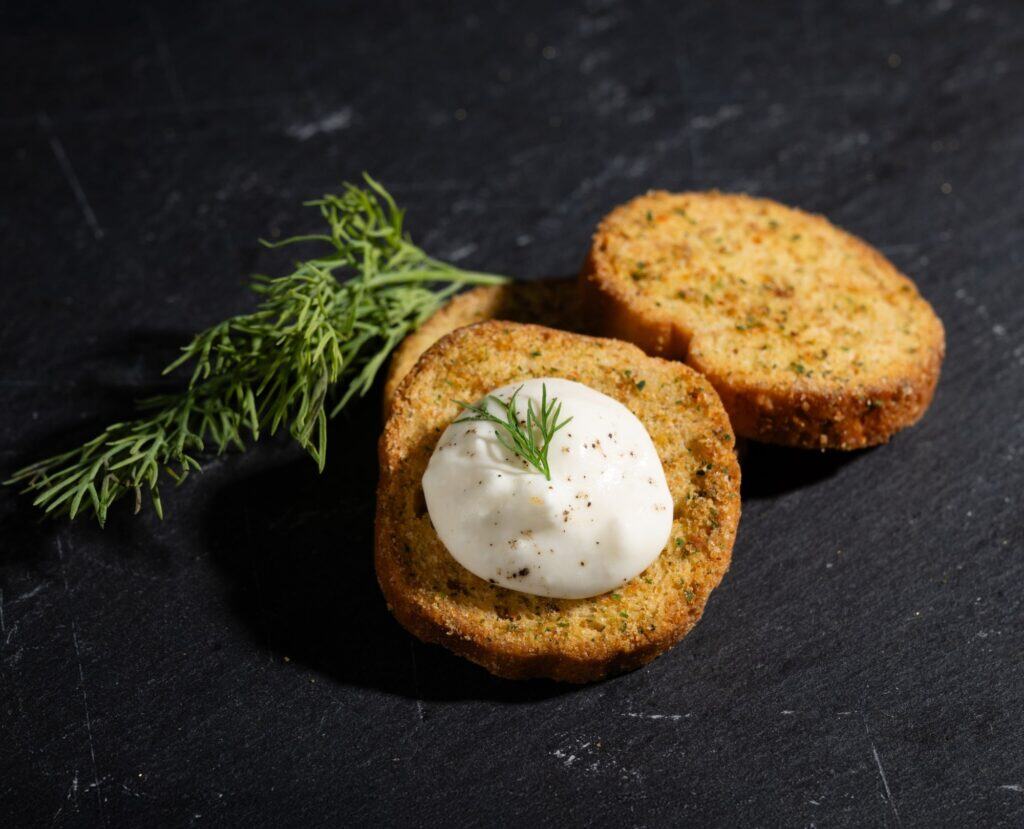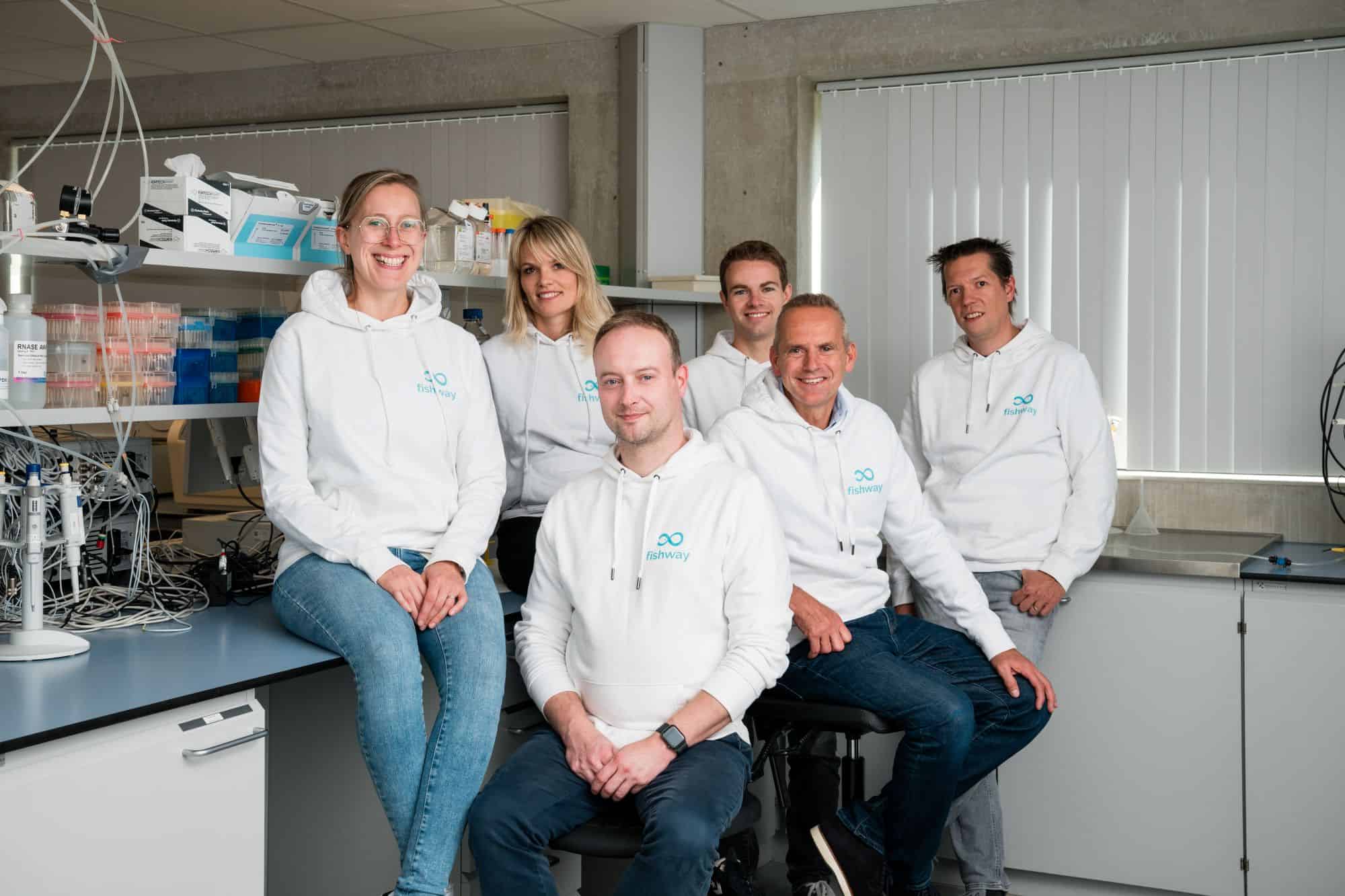Fishway is a Belgian food-tech company focused on producing cultivated fish biomass with nutritional value equivalent to traditional fish fillets. By isolating stem cells from fish tissue and cultivating them in bioreactors at room temperature, Fishway generates sustainable, high-quality ingredients for food applications.
Annelies Bogaerts (PhD Biology) is the CEO of Fishway, and has 15 years of experience in cell biology within the biotech industry and has led programs from concept to clinical application in animal health. At Fishway, Annelies drives the company’s strategic direction and bridges the gap between science and business to advance the development of sustainable, cultivated fish.
In this interview, AIn this interview, Annelies discusses Fishway’s mission to close the global fish supply gap through cultivated seafood, its strategy for scalable production, and its focus on accessible products like minced seafood and fish sticks to drive market adoption.

Can you tell us a bit about Fishway, what the company does, and its mission?
Fishway is a next-generation cultivated seafood company on a mission to close the growing global fish supply gap in a sustainable and scalable way. We develop real fish directly from cells without fishing or farming.
Our focus is on producing cultivated fish biomass: a versatile, high-quality ingredient that can be used in a wide range of products such as fishcakes, spreads, or dumplings. Our product delivers the nutritional value of traditional fish, but without potential contaminants like heavy metals, antibiotics, or microplastics.
The global demand for fish is expected to outpace supply by 2050. How do you see cultivated seafood addressing this gap?
By 2050, global demand for fish is expected to reach 248 million tonnes, while supply will only meet around 181 million tonnes, leaving a massive 67 million tonne shortfall. Wild-caught fish has plateaued, and aquaculture won’t scale fast enough to fill that gap.
That’s where cultivated seafood comes in. We don’t see it as a replacement for traditional fishing or aquaculture, but as a critical complement that can help close this supply-demand imbalance.
Cultivated fish offers a way to produce real, high-quality seafood independent of wild stocks, water temperature, or geography. It’s scalable and resilient; you can produce fresh fish anywhere, even far from the coast. And it’s free from contaminants like microplastics, heavy metals, or antibiotics.
There’s still some skepticism around cultivated seafood. How do you plan to educate consumers and change their perception of it being ‘artificial’ or ‘synthetic’?
One of the biggest misconceptions we encounter is that cultivated seafood is somehow artificial or synthetic. In reality, it’s real fish, just grown in a clean, controlled environment. Education and transparency are key to changing that perception. We focus on simplicity in how we communicate: we feed our cells, they grow, and we harvest them, similar to traditional fish farming.
We also actively engage with policymakers, investors and the public to open up our process, explain the science and build trust. When people see it firsthand, they realize it’s not science fiction, it’s a safe, sustainable and necessary part of the future food system.

While many in the cultivated meat and seafood space are focusing on high-end fillets, Fishway is targeting more accessible products like minced seafood and fish sticks. What led to this decision, and how do you see this approach accelerating market adoption?
We made a deliberate decision to focus on minced and unstructured products because that’s where the real consumer demand and volume already are. This is an area where taste and nutritional value are prioritized over structure. Starting with these types of unstructured products means we can get to market faster, at lower cost, and with fewer technical hurdles. It also allows us to meet consumers where they already are, instead of asking them to change habits or expectations. This approach not only accelerates adoption but also helps normalize cultivated seafood as a trustworthy, everyday ingredient, not just a novelty.
Your focus on biomass rather than complex cuts is a key differentiator. How does this decision impact production timelines, cost, and scalability compared to other approaches in the cultivated seafood sector?
Focusing on biomass simplifies nearly every aspect of production from bioprocess design to scale-up and that has a big impact on both timelines and cost. We’re not trying to replicate the intricate texture of a fillet, which means fewer process steps and less reliance on costly scaffolds or co-culture systems.
This streamlined approach enables us to scale production efficiently and makes our process more adaptable for future expansion, whether into new species or new product formats. Ultimately, simplicity is our strategy: scientifically, operationally and commercially.
Beyond food, you’ve mentioned exploring applications like infant nutrition and pet food. How do you see cultivated seafood fitting into these markets, and what potential do they hold for Fishway?
These markets hold a lot of potential for us. Pet food, for instance, has a shorter regulatory path and offers an opportunity to bring cultivated seafood to market more quickly through strategic collaborations.
Infant nutrition is another exciting area. Sourcing fish that meets the strict safety and purity standards for babies and toddlers is becoming increasingly difficult due to contamination in traditional supply chains. Our cultivated fish, grown in a clean and controlled environment, offers a safe, traceable, and nutritionally complete alternative, exactly what this market needs.
These applications highlight the versatility of our technology and its potential to make a positive impact well beyond mainstream seafood products.

Congratulations on securing new funding! How do you envision this new capital helping Fishway scale in the coming years, especially as you work towards regulatory approval by 2027?
Thank you! This funding round is a crucial milestone for us. It gives us the resources to finalize our R&D and product concept phase and move toward regulatory submission in 2027, followed by production at a commercially relevant scale.
The capital will also allow us to deepen our collaborations with partners across media development, bioprocess optimization, and pilot-scale manufacturing.
By staying lean and focused and by leveraging expert partners instead of building everything in-house, we can accelerate development while maintaining efficiency. This funding gives us the runway to reach those next critical milestones with confidence.
You mentioned the possibility of bringing in more value-adding investors and partners. What kind of partnerships are you particularly seeking, and how do you envision these collaborations shaping the future of Fishway?
Partnerships are absolutely central to our model. We’re looking for value-adding investors and collaborators who share our mission and bring expertise in areas like food manufacturing, ingredient integration, and go-to-market strategy.
We’ve already built strong relationships with partners such as Multus, with whom we’re co-developing a plug-and-play platform combining fish cell lines and optimized growth media. That kind of collaboration helps lift the entire cultivated seafood sector.
The additional runway through 2026 gives us the flexibility to expand our ecosystem, accelerate progress toward regulatory submission, and build a strong foundation for commercial-scale production.



